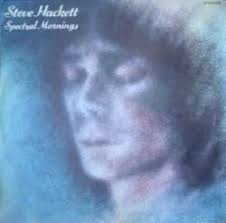Hello there - I'm of course not very objective on this (!) but I'll try to answer your question. As well as the DVDAs, the 40th anniversary editions of the Crimson albums contain regular CDs with brand new stereo mixes of the original albums. These mixes are very faithful to the original mixes (exceptions are things Robert wanted us to fix or remove from first time around, but these are few and far between). So why do them? Well, largely because I had to recreate the original stereo mixes in order to go on from there and make 5.1 mixes, and in doing so I nearly always found that the raw audio coming off the transferred multi-track tapes sounded better to me than the original mixes - sometimes these differences were revelatory, as if a whole layer of mud and grime was being removed from the music. This might be because the original recording sessions were done under time or financial pressure, and not always in the best studios, or through the best mixing consoles. Another reason is that on an album like In the Court of the Crimson King I was able to resynchronize reels of tape that had been bounced down. For example on a song like the title track; one 8 track reel was filled with drums, bass and guitar, before being bounced down to a stereo pair on a second 8 track reel, which was then filled up with mellotron parts, which was then bounced down to a stereo pair on a third reel, for vocal and woodwind overdubs. This reel was then used to bounce down to a stereo master. Finally a further bounce was made to achieve the cross fades between some of the tracks. In short this means that on the final album master used for the previous 30th anniversary edition everything was at least a third generation copy, with some things being as much as fifth generation (drums, bass and guitar), leading to a more muddy and congested sense of space in the sound spectrum. Our new master has everything as first generation - this was a time consuming process of synchronizing the session reels (a constant process of adjusting by ear, as no two reels of analogue tape ever play at exactly the same speed), and then A-B comparing the original mix every few moments to make sure we were being faithful to it in respect of balance, EQ, echo/reverb processing, level rides, stereo placement..etc.
What is gained in this process is the natural clarity and warmth in all the instrument tones, as well as separation and a massive reduction in tape hiss (Moonchild in particular is liberated from a sea of hiss on the original mix).
Based on my work on remixing 70's albums so far, the difference in the old an new mixes has - for me at least - ranged from significant (King Crimson's "Lizard", and Jethro Tull's "Aqualung") to small but hopefully worthwhile (the new Caravan mix), to pointless (the original mix of Red proved impossible to better, so we did not include a new stereo mix at all).
Of course some fans will always prefer the original mixes - after all the anomalies and harmonic distortion that tape copying gives, plus the sonic signature of the original analogue mixing desks used, can become ingrained as part of what people love about the albums. The artist will rarely see it that way, but I can totally understand how some people will find hearing a new mix of an album that is deeply familiar and loved can be disconcerting and off-putting, no matter how faithful in every respect. Or they may just disagree with the choices made in the new mix. To this end most of these reissues contain both old and new mixes on the DVDA discs, both in high res.
Lastly in the case of the King Crimson reissues they all contain previously unissued pieces and alternate takes, and a lot of them are terrific in their own right, and at the very list historically interesting for the more fanatical Crimson fan (which in my experience is most KC fans!)
Hope that helps.
SW














:format(jpeg):mode_rgb():quality(90)/discogs-images/R-1882878-1458682848-7278.jpeg.jpg)
